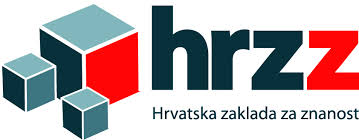Accumulation, Subcellular Mapping and Effects of Trace Metals in Aquatic Organisms (AQUAMAPMET)

Principal investigator
The aim of the proposed project is to increase our understanding and gain new knowledge on how fish, crustaceans, bivalves and fish intestinal parasites (acantocephalans) cope with elevated metal concentrations in the freshwater ecosystems by relating data on metal concentrations in water, accumulated metals and biomarker responses in biota to data on intracellular metal mapping. This issue will be tackled at different biological levels, from subcellular to organism, thus establishing how different levels of biological organisation cope with metal exposure.
Multielemental analytical technique will be applied to analyse metals/metalloids in water and biota samples and the suit of biomarkers will be studied on selected aquatic organisms encompassing biomarkers of general stress and biomarkers of metal exposure and effect. Secondary ion mass spectrometry (NanoSIMS), as a new, state-of-the-art technique, will be applied for cellular metal imaging in order to measure, visualize and quantify the distribution of specific metals at the subcellular level in biological materials. The application of NanoSIMS in the proposed project will for the first time enable the insight into the circulation of metals within tissues and cells of aquatic organisms living under increased metal exposure.
The resulting information of the proposed project will generally contribute to better understanding of metal processes in cells and tissues and consequences of metal exposure in aquatic organisms. Additional aim of the project is to evaluate anthropogenic impact on selected freshwater ecosystems referring to metal/metalloid pollution and using integrated chemical, biochemical and biological approach, as well as to evaluate the risk for human health. Two study areas of different characteristics regarding metal bioavailability are chosen -KrkaRiver(karst river) andIlovaRiver(lowland river). In both rivers, areas of environmental concern are identified. In addition, it will contribute to development of water management plans relevant to nearby protected areas, specificallyKrkaNational Parkand Nature Park Lonjsko Polje and is therefore, of strategic importance for theRepublicofCroatia. The proposed project will also provide capacity building of the next generation of scientists.

